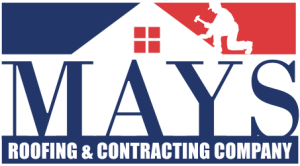How to Effectively Assess Your Roof’s Damage After a Storm: A DIY Guide
After a severe storm, your roof may sustain various types of damage that require immediate attention. Prompt assessment is essential to prevent further issues like leaks or structural compromise. This guide provides a step-by-step approach for assessing your roof’s damage post-storm, aiming to educate homeowners on effective DIY evaluation methods.
1. Safety First
Before embarking on a roof assessment, prioritize your safety. Here’s how:
- Wear Protective Gear: Use safety glasses and sturdy shoes with good traction.
- Use Proper Tools: Have a ladder with a stable footing, and if possible, secure it at the base.
- Inspect from the Ground: If the roof appears significantly damaged, it may be safer to assess from the ground level.
2. Inspecting Roof from Ground Level
Begin your assessment without climbing onto the roof. Here are key aspects to consider:
Visual Inspection
- Check for Debris: Look for fallen branches, shingles, or other materials that could compromise the roof.
- Look for Major Shingle Damage: Identify missing, cracked, or curling shingles.
- Examine Ridge Caps: Ensure they are intact and properly secured.
- Check for Uneven Areas: A sagging area may suggest structural issues or hidden damage.
Flashing and Gutters
Flashing protects critical joints in the roofing system. Inspect these components:
- Check Flashing for Damage: Look for rust spots or separation.
- Inspect Gutter System: Ensure gutters are not clogged with debris that could trap water.
3. Climbing onto the Roof
Once you’ve completed a ground-level inspection, you can proceed to a rooftop inspection. Ensure you have a spotter on the ground for added safety.
Surface Examination
- Look for Loose or Missing Shingles: Pay attention to shingles that are partially lifted or missing entirely.
- Inspect for Granules: If your asphalt shingles have lost their granules, this could indicate wear. Collection of granules in gutters can also signal this.
- Evaluate for Ponding Water: Check for areas where water has collected. Standing water can lead to water damage.
Structural Integrity
Examine the underlying framework of your roof:
- Check for Sagging Rafters: Any signs of sagging or bowing may indicate structural weakness that needs addressing.
- Look for Mold or Algae: Dark patches can indicate moisture retention, which can lead to rot.
4. Interior Inspection
Don’t neglect the interior of your home. Water can seep through to the living areas, unnoticed. Here’s what to look for:
Ceiling and Walls
- Check for Stains: Look for water stains, especially around vents and skylights.
- Assess for Peeling Paint or Wallpaper: Damage may originate from roof leaks.
Attic Inspection
The attic is critical for assessing roof damage:
- Look for Light Penetration: Any light shining through openings may indicate holes in the roof.
- Examine Insulation: Ensure it is not damp or moldy, which could suggest ongoing leaks.
- Look for Water Droplets: Any moisture accumulation should be investigated further.
5. Documenting the Damage
Once you have assessed the roof, it is crucial to document your findings. This will help when contacting professionals or filing insurance claims.
- Take Photographs: Capture clear images of all visible damage.
- List All Findings: Write down specifics, noting locations and types of damage.
- Consult with Professionals: Based on your findings, consider seeking expert opinions or repairs.
6. When to Call a Professional
Some damages require professional assessment and repairs. Consider this approach when:
- Structural Damage is Suspected: If you notice severe sagging, immediate consultation is necessary.
- Roof Coverage is Extensive: Large sections of the roof missing shingles require expertise.
- Leaks are Present: Persistent water leaks should prompt immediate attention from professionals.
7. Preventive Measures for the Future
Post-incident is the best time to establish preventive measures to protect your roof from future storms:
- Routine Maintenance: Schedule regular roof inspections and maintenance to identify potential weaknesses early.
- Trim Overhanging Branches: Prevent branches from falling during storms by trimming them regularly.
- Consider Upgrading Materials: You may want to invest in more durable roofing materials that can withstand severe weather.
Conclusion
A comprehensive assessment of your roof after a storm is crucial for preventing further damage. By following this DIY guide, you can identify the extent of damage effectively and take the necessary steps to repair or consult professionals. Remember, safety should always be your priority, and when in doubt, call a roofing specialist to ensure your home remains protected for years to come.






